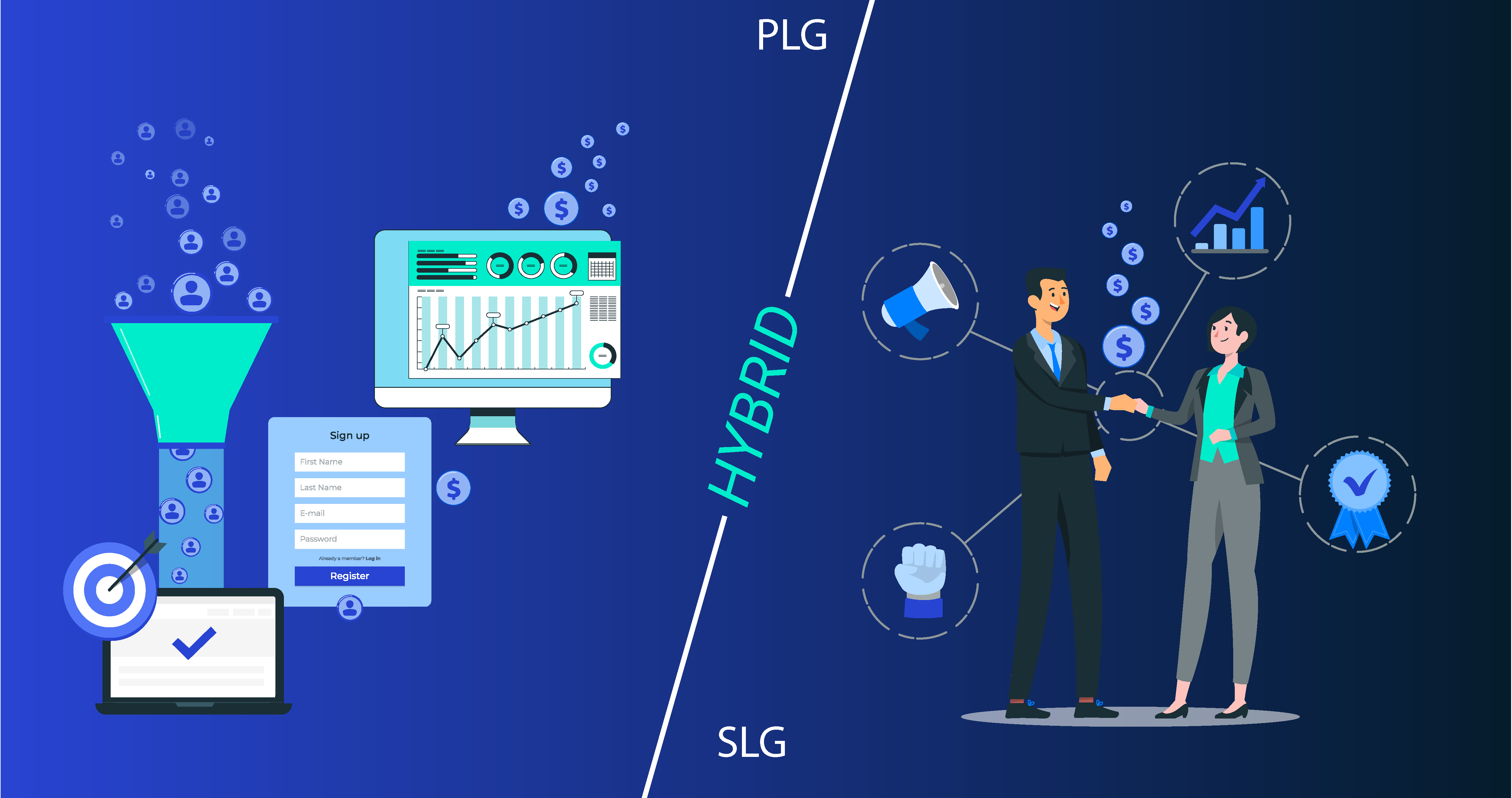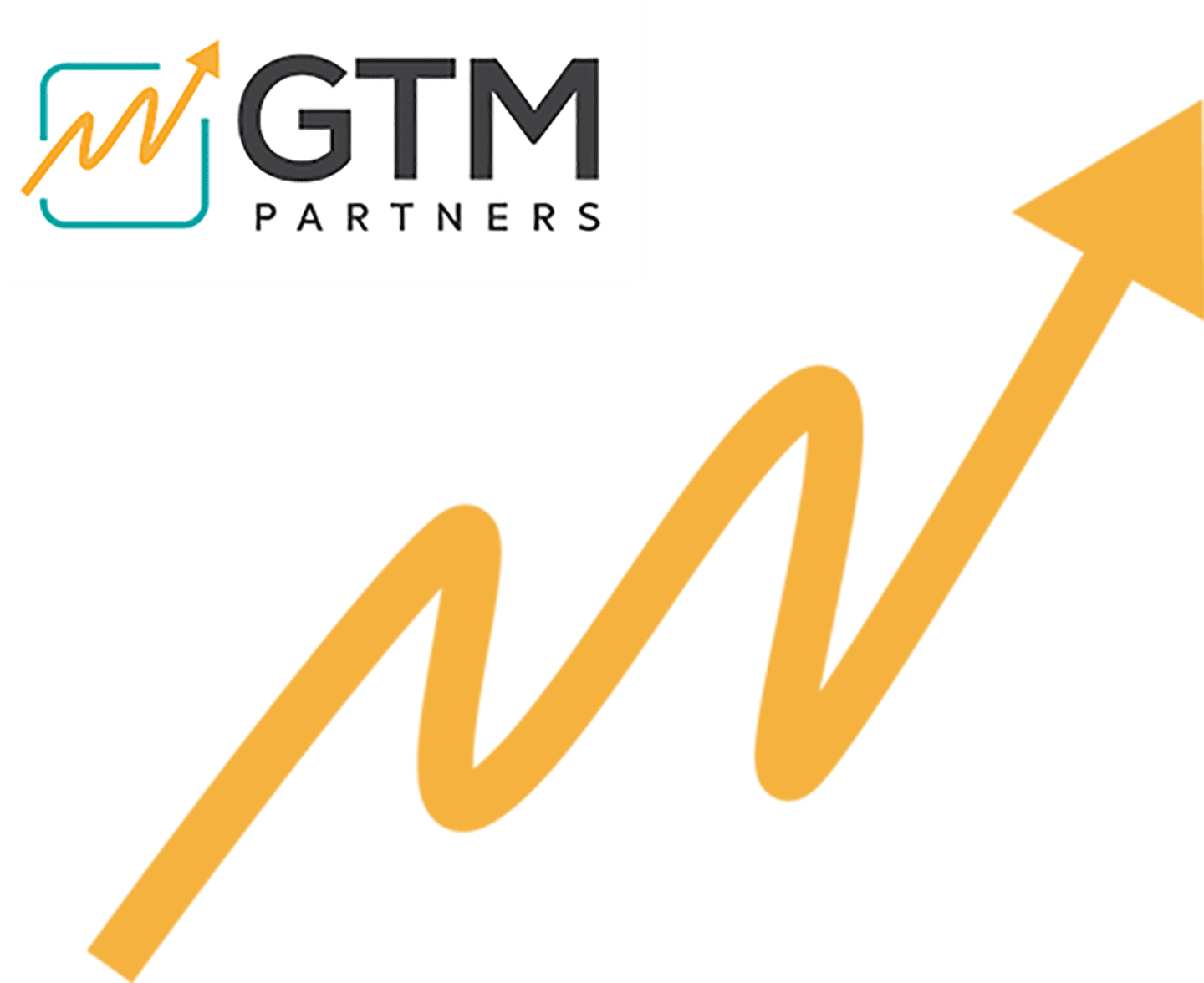Why Hybrid GTM is Winning Over PLG & SLG and How To Embark On It with Confidence
GTM leaders are starting to adopt a hybrid motion to serve the best of both worlds between PLG and Sales-led Growth (SLG)


There has been explosive interest in Product-led growth (PLG) over the last few years. However, increasingly, GTM leaders are starting to adopt a hybrid motion to serve the best of both worlds between PLG and Sales-led Growth (SLG). This blog explores why many GTM leaders are preferring the hybrid motion over exclusive PLG or SLG motions, and provides insights on how to embark upon hybrid GTM with confidence.
What Are PLG, SLG, and Hybrid GTM?
Product-led growth (PLG) makes the product the primary vehicle for customer acquisition, expansion, and retention. It relies on the product’s value to drive customer engagement and revenue growth. Companies like Slack, Zoom, and Dropbox are classic examples of PLG organizations.
Sales-led growth (SLG) puts the sales team at the forefront of customer acquisition. It focuses on building relationships and providing a personalized customer experience. B2B companies use it to sell high-ticket items or complex solutions. Oracle and IBM employ sales-led growth.


Gartner’s 2022 report on Hype Cycle for CRM Sales Technology has PLG approaching the Peak of Inflated Expectations, which means that there is a lot of buzz around the technology but the market penetration doesn’t match the hype at this point.


The Hybrid GTM strategy is a mix of both PLG and SLG. It leverages the strengths of each while offsetting their weaknesses. It’s an adaptive strategy that uses the product to attract customers and the sales team to close deals and nurture relationships. A study by OpenView in 2022 showed that nearly 48% of SaaS businesses are now using a hybrid GTM strategy, up from 37% in 2020.
Understanding the need for a hybrid GTM strategy
PLG offers lower acquisition costs, scalability, and a user-centric approach. Achieving product-market fit can be time-consuming though, and there’s the risk of missing out on potentially much larger deals without the insider insights on the customer that comes from a sales-driven strategy. SLG allows for high deal values and personalized customer relationships. However, it has a higher customer acquisition cost (CAC) and doesn’t scale.
The Hybrid GTM strategy marries the benefits of both PLG and SLG, leveraging the scalability and lower CAC of PLG alongside the personalized relationship building of SLG. Overall, it creates a balance and allows businesses to harness the power of the product and the influence of the sales team concurrently. Another benefit of the Hybrid GTM approach is its adaptability. It allows a company to pivot between the PLG and SLG based on the market environment, customer needs, or the product’s lifecycle stage.
The following table highlights the scenarios where PLG, SLG or Hybrid GTM may be best-suited for you.
Always Yes | Always No | Somewhere in the Middle | |
Is the solution space too dynamic and unfamiliar? | SLG | PLG | Hybrid GTM: Start with SLG and as the market forms, add PLG |
Is the solution highly technical or complex? | SLG | PLG | Hybrid GTM: If simplified use cases exist, use PLG for those, SLG for everything else |
Does the solution vary widely from customer to customer? | SLG | PLG | Hybrid GTM: If solution can be standardized for a given cohort, use PLG there, SLG for everything else |
Are you still working on your ICP and product-market fit? | SLG | PLG | Hybrid GTM: Start with SLG across target segments and migrate to PLG after PMF |
Is it challenging for customers to set-up the product on their own? | SLG | PLG | Hybrid GTM: Apply PLG on a stripped down version, use SLG for full-blown product |
Does the sales approach start with one or more decision makers, not users? | SLG | PLG | Hybrid GTM: Use both selling approaches in tandem – SLG on decision makers and PLG on product users |
The Challenge With Hybrid GTM
To successfully implement a Hybrid GTM strategy, aligning the sales and product GTM processes is crucial. Given that the tech stacks for PLG and SLG are vastly different, the challenge with implementing a hybrid GTM model is in ensuring that the tech can keep with the operational agility that is required of such a model. SLG requires a CRM like Salesforce as well as sales engagement tools like Outreach/Salesloft. PLG requires product analytics from tools like Pendo, MixPanel, Amplitude. Because these tools are functionally siloed, GTM leaders will struggle to find immediate on-demand answers to questions like the below:
- PLG Migration: Is there a cohort of SLG opportunities that we are able to consistently win without engagement with separate decision makers?
- PLG hot leads – Which cohort of potentially hot leads in PLG will benefit from sales rep engagement?
- Integrated metrics – what are my key metrics (ARR, win rate, lead to ARR cycle) for both SLG and PLG?
- CAC – How much can I lower my CAC if I move more of my SLG to PLG?
- ACV – Will migrating some of my GTM from SLG to PLG cause my ACV to shrink?
- Sales cycle – Will migrating some of my GTM from SLG to PLG shrink or expand my sales cycle and pipeline velocity?
- What marketing or sales touchpoints can help in moving stagnant PLG leads to the next level in conversion to ARR?
Hybrid GTM models need a layer of analytics that work across all of the siloed cross-functional data in SLG and PLG.
BigLittle Can Help
BigLittle was founded to provide GTM leaders with the tools, techniques and insights to drive revenue efficiency and predictable and aggressive ARR growth. By working with and at a level above the operational GTM tools from sales, marketing, customer success and product, BigLittle RevenUp helps them develop an agile data-driven revenue operations organization that will support them regardless of which GTM model they pick – SLG, PLG or Hybrid.
Book a free demo of BigLittle today!



